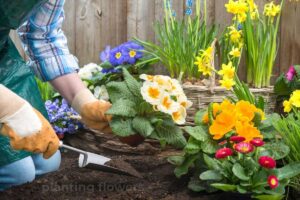This page may contain affiliate links. If you click and buy, we might get a small commission at no cost to you.
North Carolina’s warm climate and fertile soil makes it an ideal place for weeds to grow. Weeds compete with other plants like lawns and crops for nutrients, space, and water. Whether annual or perennial, homeowners consider them a nuisance.
Annual weeds grow from seeds every year and then die by the end of the season. Perennials do not fully die each year, and continue returning from stems, bulbs, or shoots called rhizomes left in the ground. That’s why they’re so hard to get rid of.
This article explores 20 common weeds of North Carolina.
20 Weeds in North Carolina
Whether they are annual or perennial, weeds can be annoying. North Carolina is home to a variety of weeds. Here are 20 of the most common weeds of North Carolina.
1. Foxtail
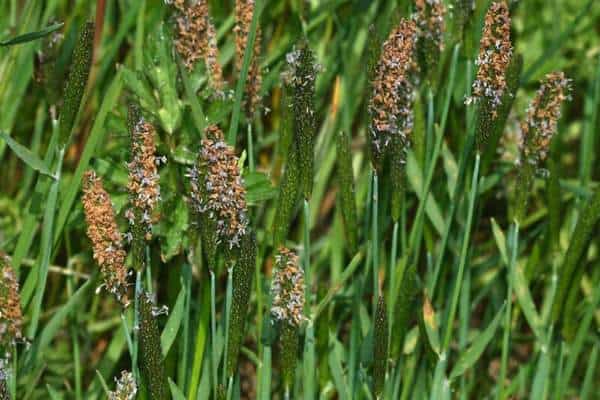
Foxtail is an annual weed that commonly grows in late spring and summer. It is yellow or green and grows in large clumps that are difficult to remove when established.
Foxtail has the fuzzy seed clusters on the tips of stems that give it its name. The seeds easily spread in the wind making it spread rapidly and hard to control.
2. Doveweed

Doveweed is an annual weed that is difficult to get rid of and grows later in the season. It creeps along the ground and spreads easily, especially in moist soil with poor drainage.
When the flowers of doveweed blossom, they only have three petals and are light purple or lavender in color. The leaves grow to be 4 inches long.
3. Lawn Burweed

Lawn burweed grows low to the ground. Other common names include spurweed and stickerweed.
It’s an annual weed that has sharp needle-like seeds or “stickers.” The sticker burs spread the seeds by clinging to anything they can, including your clothes!
4. Dandelion
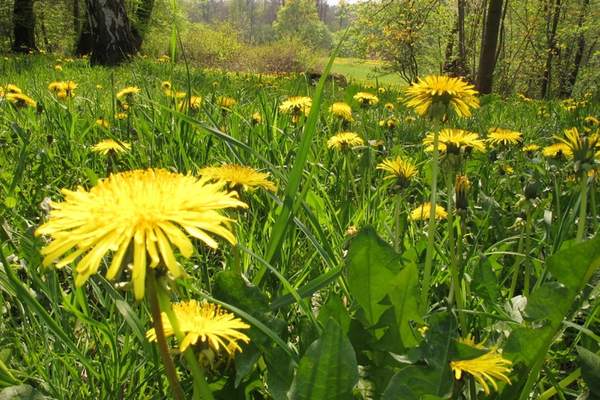
Dandelions are a perennial weed that grow virtually anywhere in the US. These plants are well known for their long stems, bright yellow flowers with many feathery tufts of seeds.
Dandelions grow tall and can be up to 24 inches. They spread by wind dispersal with their feathery sails on the seed that carry them long distances.
5. Hairy Bittercress
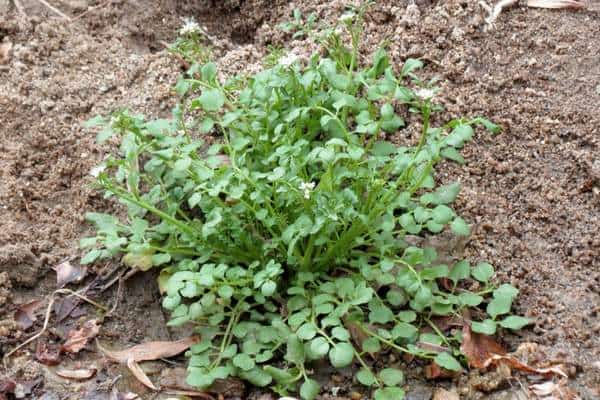
Hairy bittercress is an annual, and it’s also one of the earliest to sprout in the season. They prefer cool, wet soil and sprout after early spring rains.
Hairy bittercress can be 3 to 9 inches tall with a main stem, and a long taproot. They have tiny white flowers that turn into seed pods.
6. Nutsedge
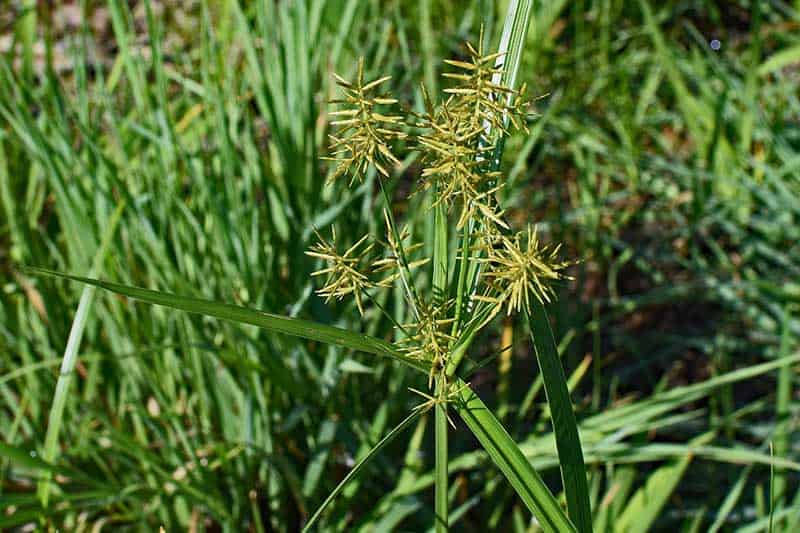
Nutsedge is a perennial weed that can be yellow or purple. The seedheads are long narrow and cluster at the end of a stem. There are a few varieties.
Nutsedge is one of the most persistent weeds in North Carolina. It’s extremely aggressive and returns year after year if not controlled.
7. Mugwort
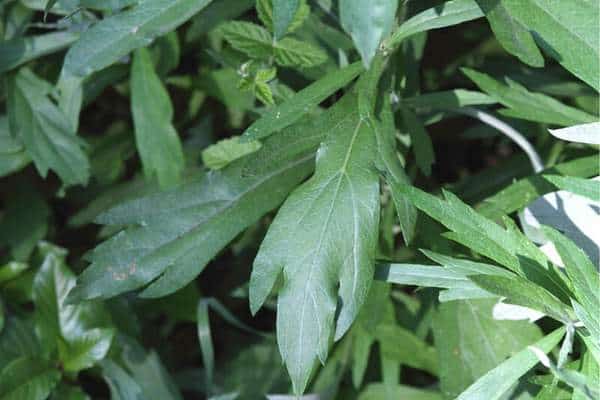
Mugwort is a perennial with leaves that give off a pungent sage-like smell. It spreads rapidly through an aggressive rhizome system.
Mugwort has medicinal properties similar to dandelion. Mugwort pollen is also a major source of hay fever and allergies.
8. Ragweed
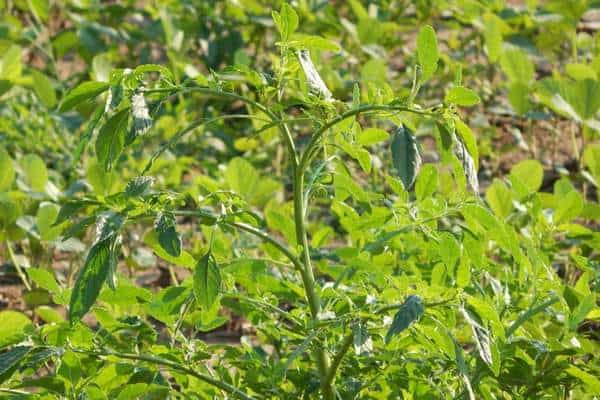
People with allergies recognize this common weed. Ragweed grows in warm regions and is very common in North Carolina.
There are several kinds of ragweed with some being annual and some are perennial. They can grow up to 4 meters tall and have white or purple flowers.
9. Dollarweed
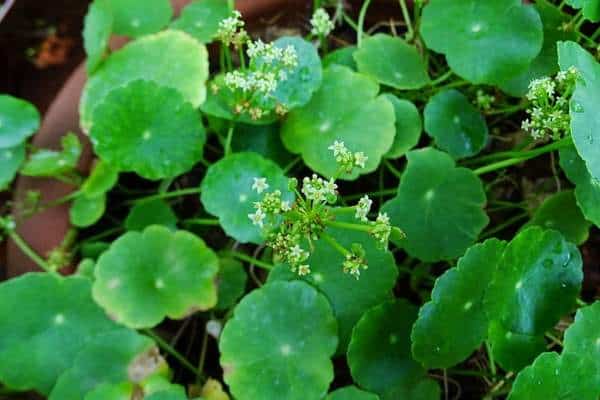
Dollarweed is a perennial weed that is also called pennywort. It has large round leaves that look like silver dollars, giving it its name.
Dollarweed grows in ditches and areas with poor drainage. The plant spreads with rhizomes and can float in water, so even flooding can’t kill it.
10. Chickweed
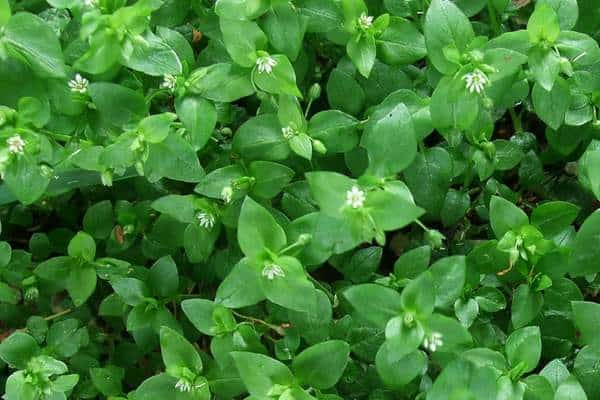
Chickweed is an annual weed named for how much chickens love it. It also attracts bees, butterflies, and birds with its small white flowers.
Chickweed grows in clumps that grow up to 16 inches tall. It can be a nuisance in gardens, where it competes with other plants for nutrients.
11. Crabgrass

Crabgrass is a very common annual weed in North Carolina. It gets its name from the spread out stems that look like crab legs.
This weed is a coarse, clumping grass that is difficult to get rid of once it becomes established. It spreads rapidly through stems that crawl on the ground.
12. Purslane

Common purslane is a hardy annual weed that grows low to the ground. It has purple or red stems and leaf edges.
Purslane has tiny yellow flowers that turn into seed pods. The pods are full of tiny round black seeds, which helps it spread.
13. Wild Onion
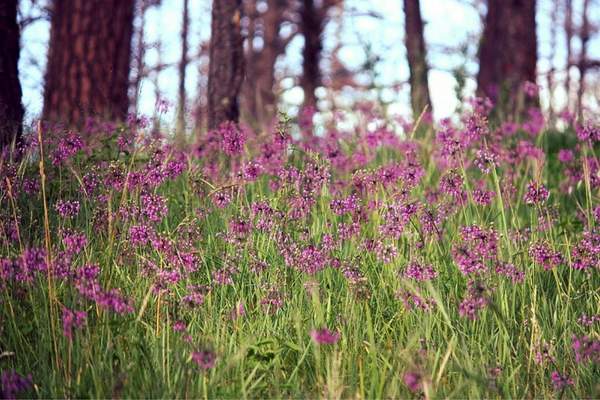
The wild onion is also called wild garlic or meadow garlic. This perennial weed is native to North America. It has a strong onion odor and taste, and it has historically been eaten by indigenous tribes in North America.
Wild onion grows bunches of small white star-shaped flowers on top of a thin stem.
14. Goosegrass
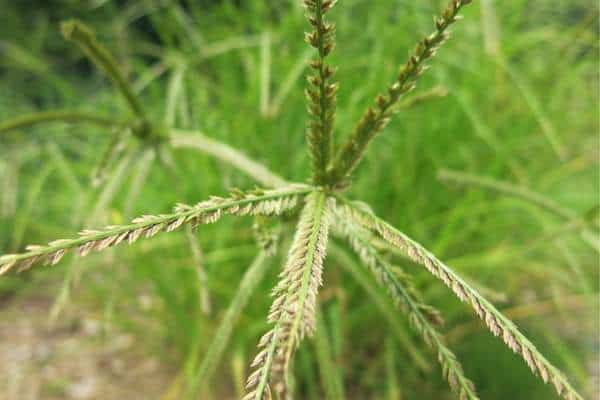
Goosegrass, also called crowfootgrass, is an annual weed known to thrive in areas with high traffic and packed-down soil. It’s not uncommon to find it living alongside crabgrass.
Goosegrass grows a half inch to 2 inches tall. Seeds grow in long bunches of 3 to 5 that are arranged at the end of the stem to look like a crow’s foot.
15. Oxalis
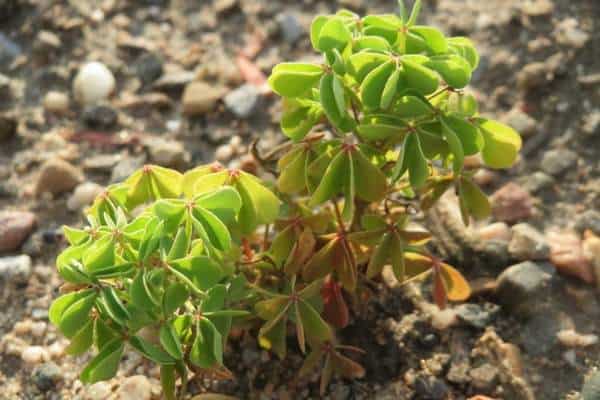
This clover-like weed can grow virtually anywhere in North Carolina and in any conditions. There are hundreds of varieties. Oxalis is a perennial and can be green or red-purple in color.
This weed grows close to the ground. It produces tiny 5-petaled yellow flowers, and the leaves are heart shaped arranged in clusters of 3.
16. Spotted Spurge
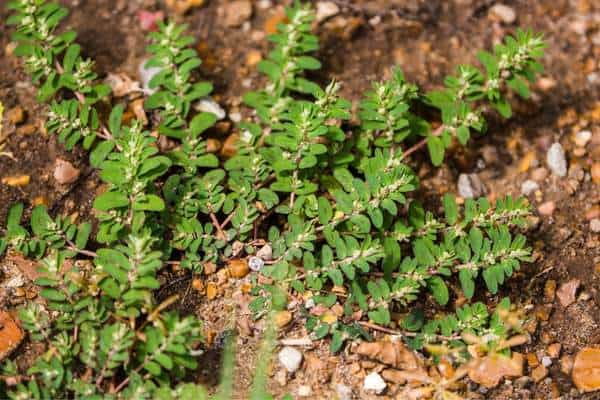
Spotted spurge is an annual weed that grows throughout North Carolina. They are a flowering plant that can grow close to the ground in mats that can grow up to 3 feet in diameter.
Spotted spurge has either red or green stems that secrete a milky toxic sap when broken. Leaves are round and green with red spots.
17. Dallisgrass
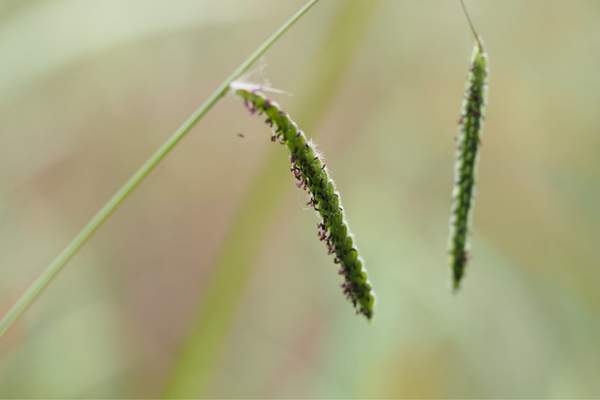
Dallisgrass is also called Dallas grass. It can grow to over 3 feet tall, forming dense clumps as it expands outward with rhizomes.
Dallisgrass is an invasive perennial weed. It was brought to the US in the 1800s from South America and quickly spread.
18. Annual Sedge
Annual sedge has a tall, triangular stem that grows up to 2.5 feet. It grows in a single stem rather than clumping like other weeds.
Annual sedge has really small flowers that are clustered on the top. The seeds look like little spikes. They spread quickly and thrive in dry soil.
19. Thistle
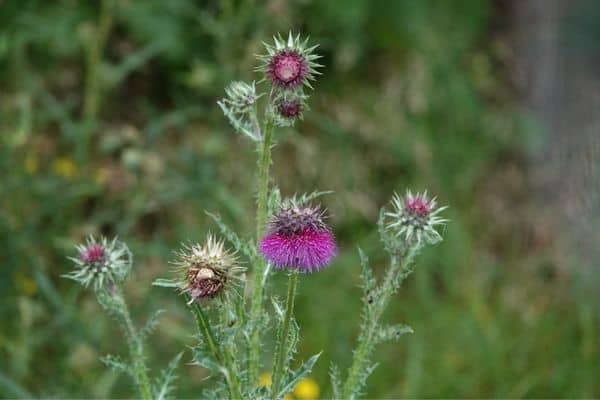
Thistle is a very aggressive weed that comes in different varieties. It can be annual or biennial, meaning it takes 2 years to bloom. Thistle has painful spines along it’s stem and leaves.
Their flower pods are covered in prickly spines. One plant can produce 4,000 seeds, which is what makes them spread so quickly.
20. Virginia Buttonweed
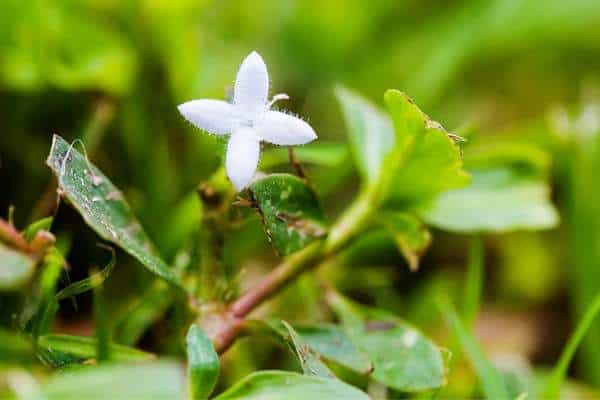
Virginia buttonweed is a perennial weed that can spread rapidly. It’s considered invasive in North Carolina and thrives in areas with poor drainage.
Virgina buttonweed grows in mats close to the ground. It has tiny white flowers with 4 petals and tapers pointed leaves.



